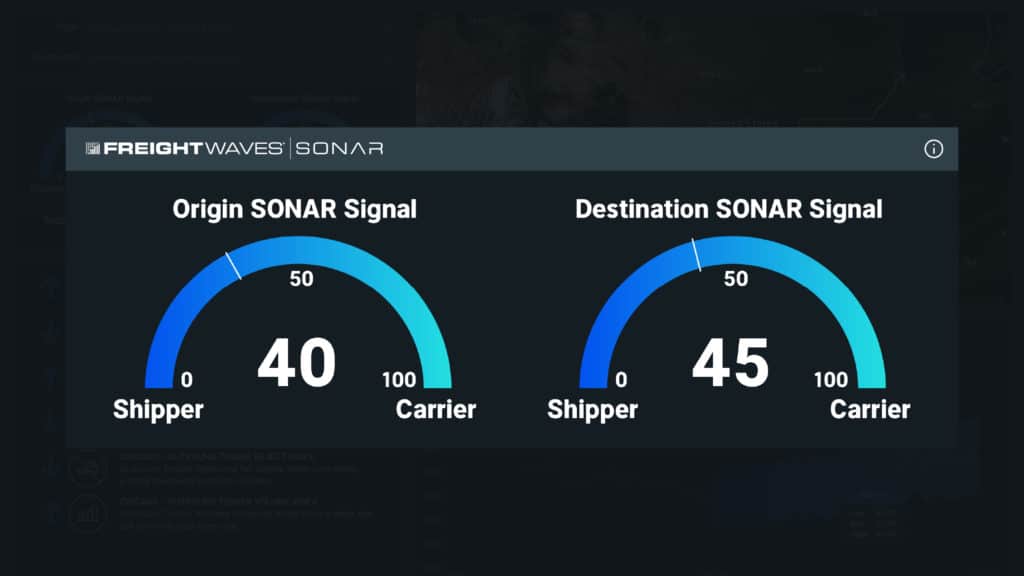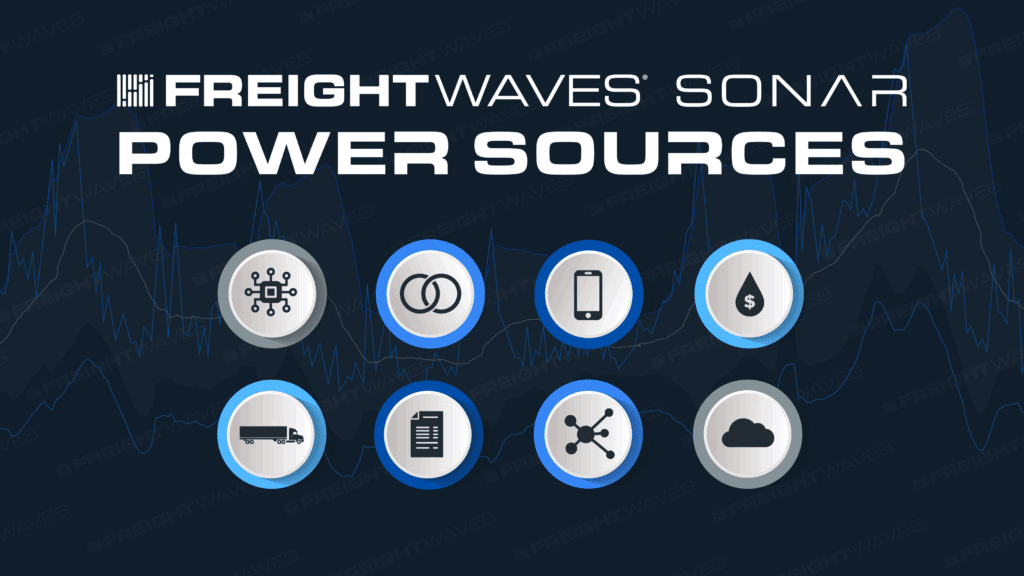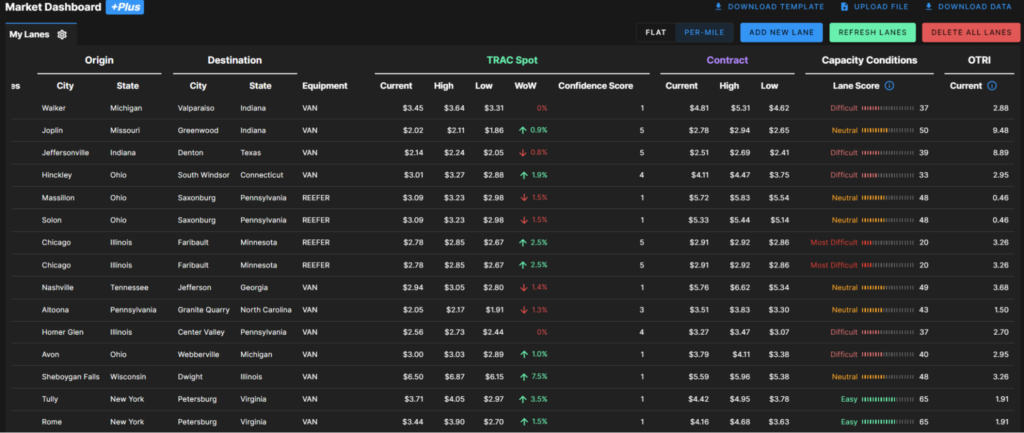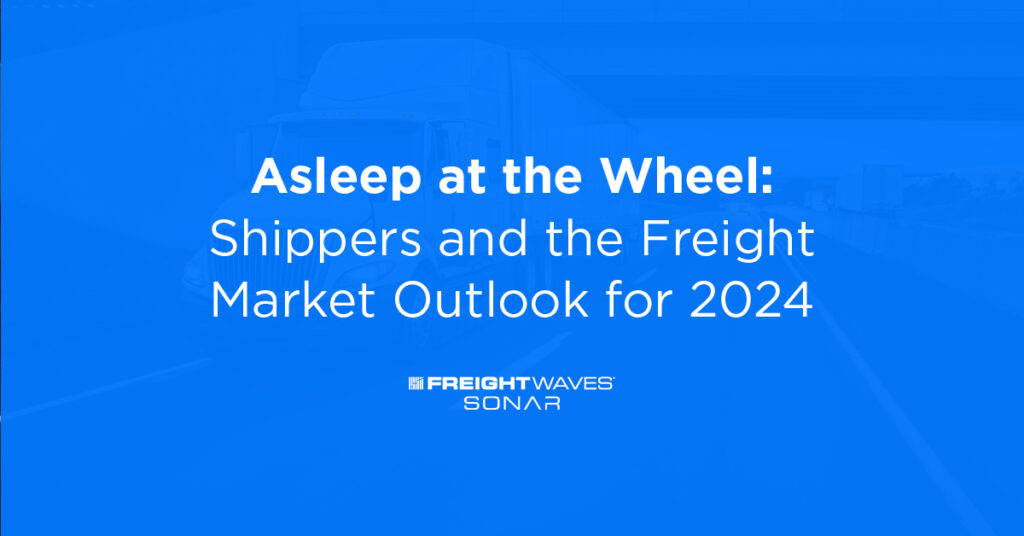This morning FreightWaves launched new features and products that make the SONAR data platform even easier to use and will help transportation companies make data-driven decisions at all levels in their organizations.
Lane Signal gives shippers, carriers and brokers real-time trucking spot rates, pricing power information, and volume and capacity data on any origin-destination pair in the continental United States. This tool automatically aggregates and analyzes data from a number of sources to give operators a clear read into lanes they search.
SONAR Signals bring the intelligence of SONAR’s platform to transportation management systems (TMS) and software vendors. With SONAR Signals, transportation software companies and providers can integrate the market data into their own platforms. SONAR Signals will allow them to provide more freight market intelligence around the types of activities with which they currently serve the freight community.
“Work on Lane Signal and SONAR Signals really began last fall during discovery interviews with customers about SONAR,” said Scott McCollister, head of product development at FreightWaves. “We were seeking to make SONAR easier for certain segments of our users and certain workflows they’re trying to accomplish.”
When an operator like a freight broker looks up a specific lane in the brokerage’s TMS, SONAR Signals will appear in the window, displaying the relative pricing power held by shippers and carriers in the origin and destination freight markets.
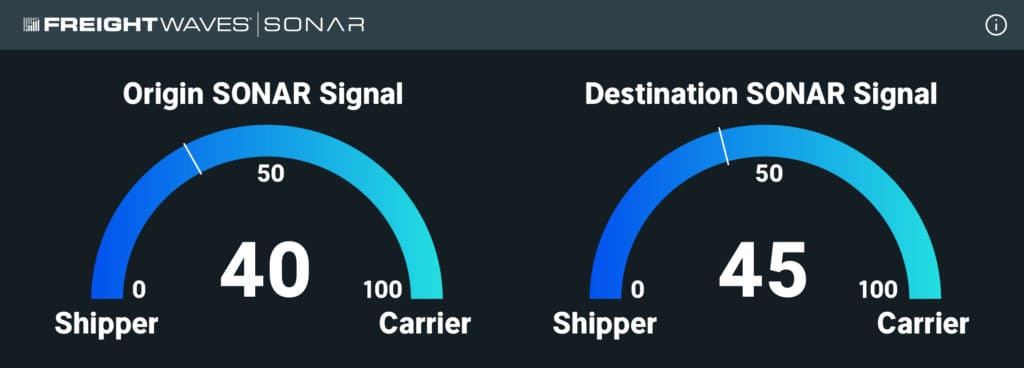
SONAR Signals help freight market participants price lanes with simple ratings based on real-time and fundamental historical data, including volumes, tender rejections, as well as previously assessed spot rates. SONAR Signals makes it easy for professionals to check real-time market conditions without deviating from their normal workflow and processes.
McCollister said that many SONAR users have ‘analyst’ or ‘director’ in their job titles, and that it was clear that a more streamlined, app-based product would be a better fit for operations teams on a brokerage floor.
The SONAR Signal application program interface (API) is the way that SONAR Signals pulls information from SONAR’s databases – establishes a direct, seamless feed of SONAR analytics into the tools that logistics professionals are already trained to use in their day-to-day jobs.
Both the origin and destination of a given lane affect the price paid for transportation. At the simplest level, carriers can charge more to leave headhaul markets – markets with more outbound than inbound freight – and must charge less to leave backhaul markets – markets with less outbound than inbound freight.
The desirability of a destination market also affects price. Rates inbound to Colorado or South Florida usually reflect the fact that it’s difficult to find freight coming out of those markets.
Most operators rely on their experience or general rules of thumb to decide how attractive a particular destination market is, but the truth is that market conditions change all the time. It pays to know when a quiet backhaul market is suddenly surging with freight, and likewise for a reliable headhaul market that has abruptly gone quiet.
That kind of against-the-grain volatility is more common than many logistics professionals realize, but real-time data is necessary to take advantage of it.
The growing complexity of supply chains and the continuing optimization of transportation networks have made freight markets even more sensitive to exogenous events. Meanwhile, supply chains are becoming more digitized, at least in the sense that more data is being generated and captured.
The hard problem continues to be shifting from a culture where decisions are made on the basis of experience to a culture where decisions are made on the basis of new data.
It’s not a trivial task to analyze data in a rigorous way and deliver a simple output to rank and file decision-makers exactly when they need it, but that’s exactly what FreightWaves’ new SONAR Signals does.
To learn more about SONAR Signals, fill out the form below and a member of the SONAR team will reach out to you.


